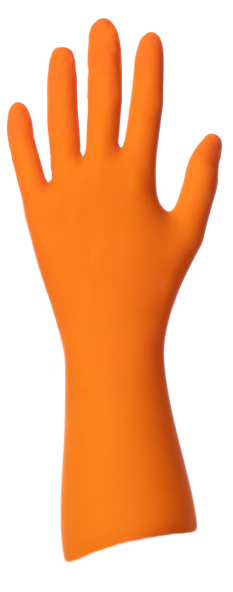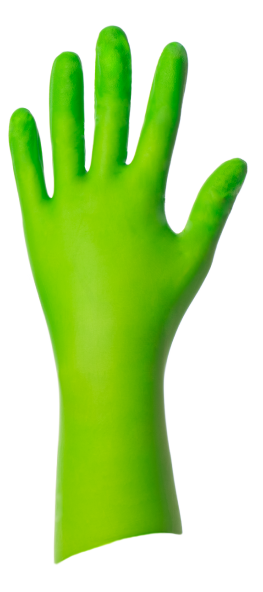WHICH PROTECTIVE GLOVES FOR CYTOTOXIC DRUGS?
According to the IARC (International Agency for Research on Cancer), worldwide cancer cases are expected to increase from 19.3 M in 2020 to 28.9 M in 2040*. Cytotoxic drugs remain the first line of defence in the treatments to act on cancer cells and tackling this disease and many others.
The type and the quality of gloves used to handle chemotherapy products are therefore essential to ensure the protection of the workers and the integrity of the cytotoxic product.
HANDLING CYTOTOXIC DRUGS
There are many different cytotoxic drugs (with different concentration and often used in combination under different modes of administration) such as:
- Cisplatin
- Cyclophosphamide
- Dacarbazine
- Doxorubicin Hydrochloride
- Etoposide
- Etc ...
The hazardous nature of cytotoxic drugs is widely acknowledged leading the International Agency for Research on Cancer to classify some chemotherapy drugs as possibly carcinogenic, mutagenic, and teratogenic**.
** IARC Monographs on the Evaluation of Carcinogenic Risks to Humans Volume 76 (2000) and IARC Monographs on the Evaluation of the Carcinogenic Risk of Chemicals to Humans Volume 26 (1981)
The most common form of exposure to chemotherapy drugs hazards is through dermal contact, inhalation, or ingestion. From manufacturing to handling, including transport and waste management, chemotherapy drugs are used by many professionals such as nurses, caregivers, doctors, veterinarians, cleaning staff etc…
Safety concerns regarding the preparation (safety of the product particularly to microbiological contamination) and handling of chemotherapy agents are more current than ever. Toxicity, time of exposure and frequency of the exposure to cytotoxic drugs must be considered. SHIELD Scientific, through its regular seminar programmes and articles in relevant publications, has been actively educating users on best practice when handling cytostatic.
Thus, wearing gloves is not an option and knowing chemotherapy gloves specifications if of utmost importance.
CHEMO GLOVES AS CYTOTOXIC PROTECTION
In accordance with Directive (EU) 2004/37/CE, employers are obliged to assess “the risks related to exposure to carcinogens or mutagens at work” and provide appropriate Personal Protective Equipment (PPE) when there are no other alternatives to manage these risks.
Irrespective of the classification of the cytotoxic drug manipulated, required Personal Protective Equipment (PPE) such as chemotherapy tested gloves must be worn and then the question is how to determine the suitability of the gloves.
Where the intended purpose is personal protection, it would seem logical to select first a glove registered according to the PPE Regulation (EU) 2016/425 rather than the Medical Devices Regulation (EU) 2017/745 where the emphasis is on patient protection.
Similarly, given the known exposure to chemical hazards, selecting cytotoxic gloves designed to protect against the highest level of chemical risk will be necessary. It is therefore important to know the gloves’ ability to resist permeation (process by which a chemical agent migrates through the protective glove at a molecular level) and penetration (Passage of a chemical agent through closures, porous material, seams, pinholes, and other imperfection in the protective glove) of cytotoxic drugs.
CHEMOTHERAPY PROTECTIVE GLOVES STANDARDS
There are two main chemotherapy gloves standards on which are based specific data on gloves permeation regarding cytotoxic:
- ASTM D6978-05 “Standard Practice for Assessment of Resistance of Medical Gloves to Permeation by Chemotherapy Drugs”.
- EN 16523-1:2015+A1:2018 “Determination of material resistance to permeation by chemicals - Permeation by potentially hazardous liquid chemicals under conditions of continuous contact”.
Perhaps not surprisingly operators potentially exposed to chemotherapy drugs are increasingly opting for only those nitrile gloves that have been tested according to ASTM D6978-05. Not only is this standard specifically designed for healthcare workers exposed to chemotherapy drugs, but it is hundred times more sensitive than the European equivalent test (EN 16523-1:2015+A1:2018 supersedes EN 374-3:2003).
For a quick comparison of these two standards, the table below may be helpful:
| Comparison | ASTM D6978-05 | EN 16523-1:2015+A1:2018 (Formerly EN 374-3:2003) |
|---|---|---|
| Test temperature | 35°C (+/-2°C) | 23°C (+/-1°C) |
| Permeation rate | 0.01 µg/cm²/min | 1.0 µg/cm²/min |
| Scope | Resistance against cytotoxic drugs | Resistance against chemicals in general |
| Test time | 240 minutes | 480 minutes |
| Test chemicals | Cytotoxic drugs - 7 are defined and 2 additional chemicals to be selected by test house. | 12 standard chemicals detailed in EN 374-3:2003, with no mention of cytotoxic drugs. Thus, no specific guidance is given on the selection of cytotoxic drugs. |
| Area of glove that needs to be tested | Palm or cuff whichever is the thinnest part of the glove & outer side of glove (i.e., that which is in contact with chemical). | Palm area for gloves of homogenous design. Outer surface to be in contact with chemical. |
SHIELD Scientific ASTM D6978-05 NITRILE GLOVES
See below SHIELD Scientific laboratory gloves and cleanroom gloves that have been tested according to ASTM D6978-05 and for which test reports are available on request:
SHIELDskin CHEM™ NEO NITRILE™ 300
SHIELDskin™ ORANGE NITRILE™ 260
SHIELDskin™ ORANGE NITRILE™ 300
SHIELDskin™ ORANGE NITRILE™ 300 Sterile
SHIELDskin XTREME™ Sterile ORANGE NITRILE™ 300 DI
SHIELDskin XTREME™ Sterile White Nitrile 330 DI+
SHIELDskin XTREME™ ORANGE NITRILE™ 300 DI
SHIELDskin XTREME™ Sterile White Nitrile 400 DI+
SHIELDskin XTREME™ White Nitrile 400 DI+
SHIELDskin XTREME™ White Nitrile 300 DI
For a more in-depth discussion about handling cytotoxic drugs, readers may wish to read the article that appeared in the March 2010 issue of Cleanroom Technology. (Click here).
Any specific inquiry about our ASTM D6978-05 chemo gloves, please contact your SHIELD Scientific sales representative or one of our specialized distributors.






